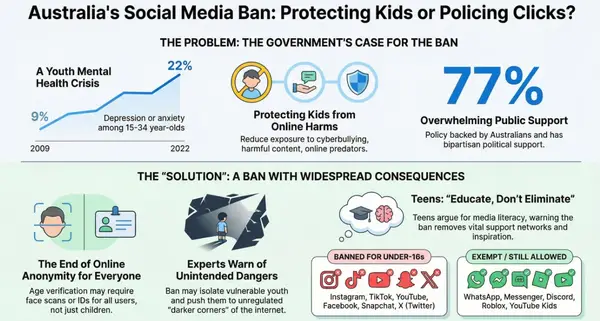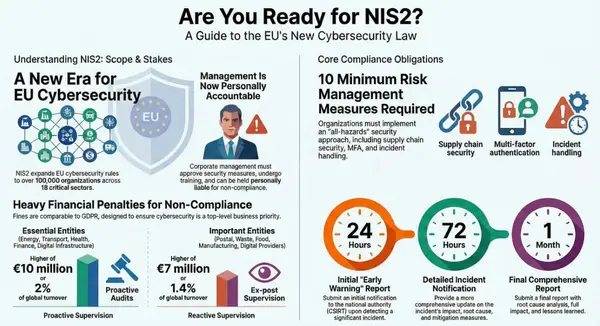The European Union's Antitrust Case Against Google: A New Era of Tech Regulation

Bottom Line Up Front: The EU is poised to impose a modest fine on Google for anticompetitive practices in its advertising technology business, marking a significant shift in regulatory approach under new antitrust chief Teresa Ribera. While previous cases resulted in billions in fines, the focus has moved from punishment to behavioral change, with the threat of forced divestiture still looming as parallel US proceedings intensify.
The Current Landscape: A Regulatory Crossroads
The European Union's approach to regulating Big Tech is undergoing a fundamental transformation. After years of record-breaking fines under former Competition Commissioner Margrethe Vestager, new EU antitrust chief Teresa Ribera is taking a markedly different approach, focusing on ending anti-competitive practices rather than imposing hefty deterrent penalties.
Google is set to face a modest EU antitrust fine in the coming weeks for allegedly anti-competitive practices in its adtech business, following a four-year investigation triggered by a complaint from the European Publishers Council. This case represents the culmination of the European Commission's most comprehensive investigation into Google's advertising technology ecosystem to date.

Understanding the Core Investigation
The EU's case centers on Google's dominance in what's known as "open web display" advertising—ads that appear on third-party websites rather than on Google's own platforms like Search or YouTube. The investigation, which began in 2021, focuses on whether Google has abused its position by operating on both sides of the advertising market, effectively serving as both the auctioneer and a participant in digital ad sales.
Key Allegations Include:
- Self-preferencing: Google allegedly gave favorable treatment to its own advertising services over competitors
- Market manipulation: The company is accused of using its control of key infrastructure to disadvantage rivals
- Dual role conflicts: Operating simultaneously as a platform for advertisers and publishers while also competing with them
The European Commission's preliminary findings suggest that Google's integrated approach to advertising technology creates inherent conflicts of interest. The company controls critical components across the entire advertising supply chain, from the ad server that publishers use (DoubleClick for Publishers) to the exchange where ads are bought and sold (AdX).
The Evidence: A Pattern of Exclusionary Conduct
The Commission's case relies on what antitrust experts call an "effects-based approach"—demonstrating that Google's conduct deviated from fair competition and produced exclusionary effects on rivals. The evidence includes:
Preferential Treatment Documentation: Internal Google documents and market analysis showing how the company positioned its own services more favorably than competitors' offerings in search results and advertising auctions.
Algorithmic Manipulation: Evidence that Google modified its algorithms to demote competing services while simultaneously promoting its own products through prominent placement and highlighted displays.
Market Impact Analysis: Economic data demonstrating how Google's conduct foreclosed competition by impairing rivals' access to customers and markets on terms that go beyond efficient competition.
Causal Links: The Commission established direct connections between Google's anticompetitive behavior and measurable harm to competitors, showing that the effects weren't merely coincidental but resulted from deliberate strategic choices.

The Geopolitical Dimension: Trade Tensions and Regulatory Independence
In an unprecedented development, the EU postponed its planned announcement of Google's fine amid concerns about potential US retaliation, with EU trade commissioner Maroš Šefčovič raising questions about the decision's timing. This delay highlights the complex intersection of antitrust enforcement and international trade relations.
Google was initially told that the fine would be announced on Monday, but the announcement was delayed without explanation, with sources indicating the postponement was linked to broader EU-US trade negotiations. This diplomatic maneuvering underscores how tech regulation has become intertwined with broader geopolitical considerations.
The delay drew sharp criticism from competition experts. Germany's Monopolies Commission called the delay "an alarming precedent for the independence of European antitrust enforcement," with chairman Tomaso Duso stating that "the protection of competition must not become a pawn of the Trump administration".
A New Regulatory Philosophy: Behavior Change Over Punishment
The expected modest fine represents a fundamental shift in EU enforcement philosophy. Unlike Vestager's approach, which resulted in Google paying over €8 billion in antitrust fines between 2017 and 2019, Ribera's strategy prioritizes structural behavioral changes over financial penalties.
Previous EU Fines Against Google:
- 2017: €2.42 billion for favoring its comparison shopping service
- 2018: €4.34 billion for Android operating system practices (later reduced to €4.125 billion)
- 2019: €1.49 billion for restrictive AdSense clauses
Sources indicate that Ribera will not order Google to sell parts of its adtech business, despite her predecessor's suggestions that the company could divest its DoubleClick for Publishers tool and AdX ad exchange. This decision reflects both practical considerations about the complexity of forced breakups and strategic coordination with parallel US proceedings.

The American Parallel: DOJ's Aggressive Approach
While the EU contemplates modest remedies, the United States is pursuing far more aggressive measures. In April 2025, the U.S. District Court for the Eastern District of Virginia held that Google violated antitrust law by monopolizing open-web digital advertising markets, setting the stage for potentially transformative remedies.
The DOJ's remedies trial is scheduled to begin on September 22, 2025, with prosecutors seeking sweeping structural changes including:
Phase One: Forced sharing of real-time AdX bidding data with competitors through Prebid, an open-source bidding platform.
Phase Two: Open-sourcing Google's auction logic—the proprietary algorithms that determine which ads are shown and at what price.
Phase Three: Complete divestiture of both AdX and DoubleClick for Publishers, with Google prohibited from operating an ad exchange for a decade following the sale.
The DOJ's approach goes beyond mere behavioral remedies, seeking to fundamentally restructure the digital advertising ecosystem. The proposal includes placing 50% of Google's net revenues from AdX and DFP into escrow until divestitures are complete, demonstrating the government's commitment to ensuring compliance.

Google's Defense Strategy: Minimal Disruption
Google has consistently argued that its integrated advertising technology stack benefits both publishers and advertisers by providing more efficient and effective ad matching. The company's proposed remedies focus on increased data sharing and operational transparency rather than structural changes.
Google's Counter-Proposals Include:
- Making AdX real-time bidding data available to third-party ad servers
- Eliminating Unified Pricing Rules that critics claim favor Google's own services
- Committing never to reintroduce first-look or last-look advantages in open web auctions
- Allowing independent compliance monitoring for three years
"The DOJ conceded Google's proposed ad tech remedy fully addresses the Court's decision on liability. The DOJ's additional proposals to force a divestiture of our ad tech tools go well beyond the Court's findings, have no basis in law, and would harm publishers and advertisers," said Lee-Anne Mulholland, Google's vice president of regulatory affairs.

Market Implications: The Stakes for Digital Advertising
The outcome of these parallel proceedings could fundamentally reshape the $700 billion global digital advertising market. Google's advertising revenue reached $264.6 billion in 2024, representing 75.6% of Alphabet's total revenue. While the targeted adtech products represent approximately 12% of this figure—roughly $42 billion—their strategic importance extends far beyond their immediate financial contribution.
Potential Market Impacts:
- Publisher Revenue: Changes to Google's ad serving infrastructure could affect how publishers monetize their content
- Advertiser Access: Modified auction mechanics might alter how advertisers reach audiences
- Innovation Incentives: Structural separation could spur competition and innovation in adtech
- Market Concentration: Divestiture could reduce the dominance of a few large platforms
Industry experts remain divided on the likely effectiveness of various remedies. Some argue that behavioral changes alone won't address the fundamental structural advantages Google has built over years of acquisitions and integration. Others contend that forced breakups could harm innovation and efficiency in the digital advertising ecosystem.
Global Precedent: Beyond Europe and America
The EU and US cases are being closely watched by regulators worldwide as governments grapple with how to address Big Tech's market power. The outcomes could establish precedents for similar investigations in other jurisdictions, potentially creating a domino effect of regulatory action against major technology platforms.
International Developments:
- United Kingdom: The Competition and Markets Authority is conducting its own investigation into Google's advertising practices
- Australia: The Australian Competition and Consumer Commission has raised concerns about digital platform dominance
- India: Antitrust authorities are examining similar issues in the rapidly growing Indian digital market

Looking Ahead: Enforcement in an Era of AI and Emerging Technologies
As these traditional antitrust cases proceed, regulators are simultaneously grappling with new challenges posed by artificial intelligence and emerging technologies. Google's position in AI development adds another layer of complexity to discussions about market power and competition in the digital economy.
The integration of AI into advertising technology—from automated bidding to content creation—raises questions about whether current antitrust frameworks are adequate for addressing competition issues in rapidly evolving technological landscapes.
Conclusion: A Watershed Moment for Digital Competition
The EU's antitrust case against Google's advertising services represents more than just another regulatory proceeding—it's a test of whether antitrust authorities can effectively address the structural challenges posed by digital platform dominance. The contrast between the EU's measured approach under Teresa Ribera and the DOJ's aggressive push for divestiture illustrates the range of regulatory responses available to governments.
While the immediate outcome may be a modest fine rather than structural breakup, the longer-term implications could be profound. The case establishes important precedents for how competition authorities analyze integrated digital platforms and what remedies are appropriate for addressing anticompetitive conduct in complex technological ecosystems.
As the September 2025 US remedies trial approaches and the EU finalizes its decision, the global advertising industry—and indeed the broader digital economy—awaits clarity on what the future of platform regulation will look like. The stakes extend far beyond Google's quarterly earnings to fundamental questions about competition, innovation, and the structure of the digital marketplace that increasingly defines modern commerce and communication.

The outcome of these proceedings will likely influence antitrust enforcement for years to come, potentially reshaping not only how digital advertising operates but also setting the template for addressing market concentration in other technology sectors. Whether through modest behavioral changes or dramatic structural separation, the resolution of these cases marks a pivotal moment in the ongoing effort to balance innovation incentives with competitive markets in the digital age.












